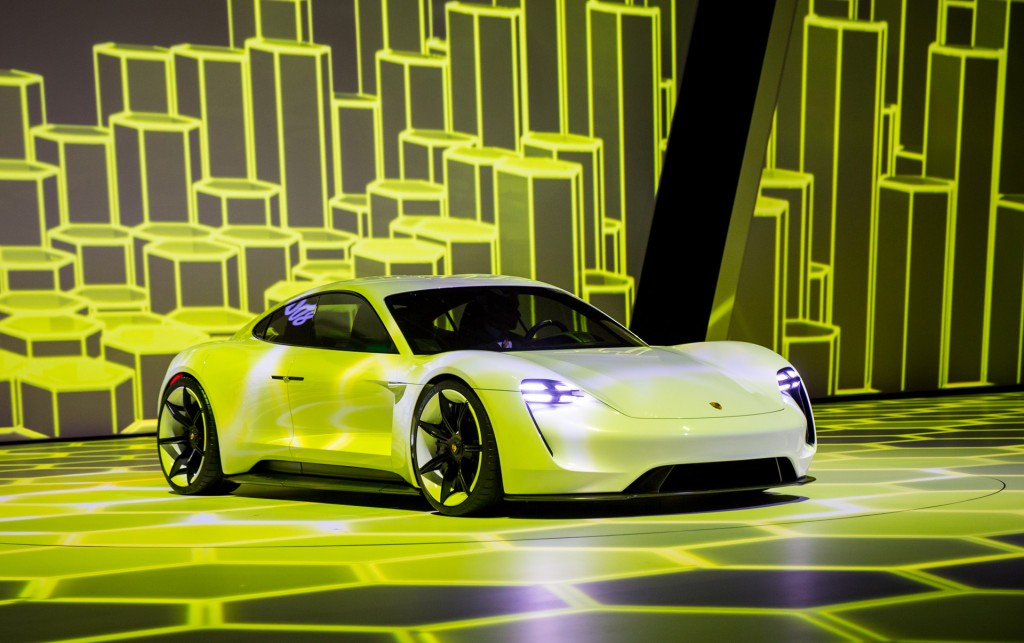
Porsche Mission E concept, 2015 Frankfurt Auto Show
Auto journalists often relish interviews and roundtable sessions with German executives and engineers.
They usually haven't been beaten into submission and forced to stick to scripted talking points, as have too many of their U.S. counterparts.
Most German auto executives also speak excellent English, so fewer translators are involved, removing a buffer.
DON'T MISS: Porsche Mission E electric sedan buyers want, expect fast "Turbo Charging"
In other words, execs from German makers may actually answer questions and provide journalists with new information.
Two weeks ago, at the media preview days that preceded the Geneva auto show, we sat down with Porsche executives to discuss their future plans for a large number of plug-in electric Porsche models.
What follows is a summary of points from several interviews, along with previously issued press material on preparations for production of the Porsche Mission E electric sport sedan, anticipated to go on sale as a 2020 model.
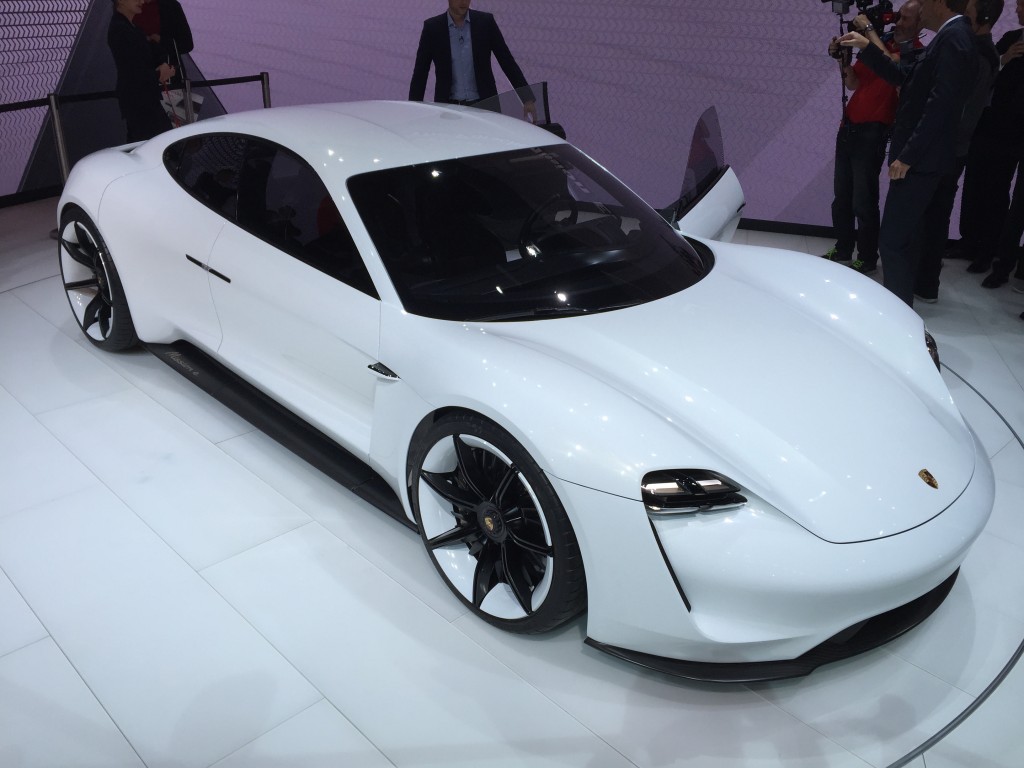
Porsche Mission E Concept - 2015 Frankfurt Auto Show live photos

Porsche Mission E Concept - 2015 Frankfurt Auto Show live photos

Porsche Mission E Concept - 2015 Frankfurt Auto Show live photos
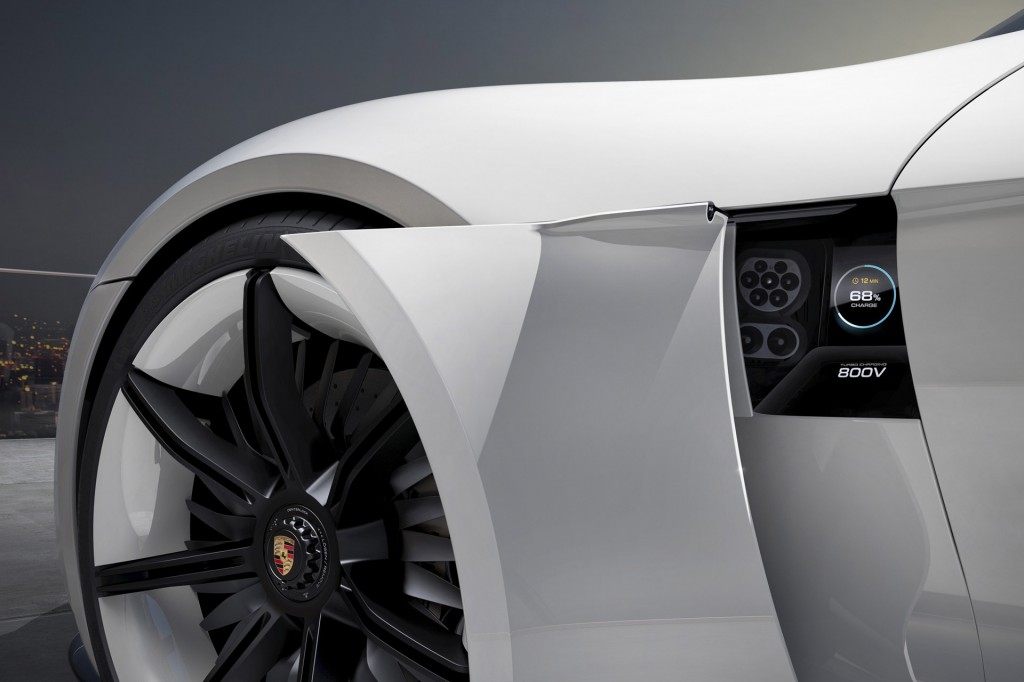
Porsche Mission E concept, 2015 Frankfurt Auto Show
Porsche Mission E: The Basics
The Porsche Mission E was unveiled at the 2016 Frankfurt auto show as a concept for the brand's first battery-electric sport sedan, receiving rave reviews for its low, sleek design.
Its range was described as roughly 300 miles, with output of at least 400 horsepower, and Porsche promised a 15-minute recharge to 80 percent of battery capacity from ultra-fast DC charging operating at 350 kilowatts and 800 volts, a system later dubbed "Turbo Charging."
The Mission E will go into production in 2019 on a new assembly line now being built at Porsche's headquarters factory in Zuffenhausen, outside Stuttgart. Its model name isn't yet known.
Initial equipment will be brought into the renovated assembly-plant buildings early this year, and pilot production cars will follow the prototypes already built.
Factory capacity for the car is said to be 20,000 units a year, with some capacity to boost that volume slightly if required.
WATCH THIS: Porsche Mission E electric car concept design video (Apr 2016)
Porsche's customers want plugs
One of the more remarkable statistics that emerged from our discussions was this: Almost 60 percent of Panamera sedans Porsche now sells in Europe are the plug-in E-Hybrid version, said Klaus Zellmer, CEO of Porsche North America.
In the U.S., moreover, 20 percent of its Cayenne sport-utility sales are the E-Hybrid, and that's before the new generation of Cayenne E-Hybrid goes on sale.
In future, the company will offer two variants of its plug-in hybrid models, a standard version and a higher-performance "Turbo S E-Hybrid"—one that is presently the most powerful and fastest model in the new Panamera lineup.
Performance always appeals to Porsche buyers, but as interest in its diesel variants wanes, plug-in Porsches are clearly seen as desirable because they offer extra acceleration over gasoline-only versions.

Porsche Mission E Cross Turismo concept
The Mission E has unique underpinnings ...
The platform, or architecture, to be used for the Mission E is known within Porsche as J1.
It is not shared with any other vehicle outside the brand, though the Mission E Cross Turismo all-electric crossover concept shown at Geneva is clearly a derivative using the same underpinnings.
That derivative seems likely to go into production as an electric counterpart to the Sport Turismo "shooting brake" version of the Panamera sedan.
CHECK OUT: Porsche Mission E Cross Turismo concept: second electric model previewed
Those are the only two versions of J1 "up to now," said Stefan Weckbach, Porsche's head of battery-electric vehicles, though he suggested "a couple of others" might be possible, specifically mentioning a "two-door" vehicle as one candidate.
Those could come from Porsche, he said, possibly even other makes within the VW Group. While the brand guards its image zealously, Porsche already sells V-8 engines to other parts of VW Group, so precedent exists.
Still, J1 isn't likely to last as long as most architectures, either within Porsche or in the sprawling array of VW Group vehicles and brands globally.

Porsche Mission E concept, 2015 Frankfurt Auto Show
"Normally, production life-cycles are set at somewhere between five and seven years," Albrecht Reimold, a member of Porsche's executive board, said in an interview with Automobil Produktion magazine subsequently released by Porsche in an English translation.
"But we are seeing a trend towards shorter cycles these days"—indicating that perhaps a second-generation Mission E could come as early as 2024 or 2025.
... but future electric Porsches will share an architecture with Audi
Like the Mission E, the first battery-electric Audi—the 2019 Audi e-tron crossover utility, which will go on sale before the end of this year—is built on dedicated underpinnings.
That architecture, known as MLB-Evo, is a derivation of VW Group's MLB architecture for larger vehicles with longitudinally mounted combustion engines.
As such, it likely includes some compromises in its adaptation to an underfloor battery pack and a pair of transverse electric motors front and rear.
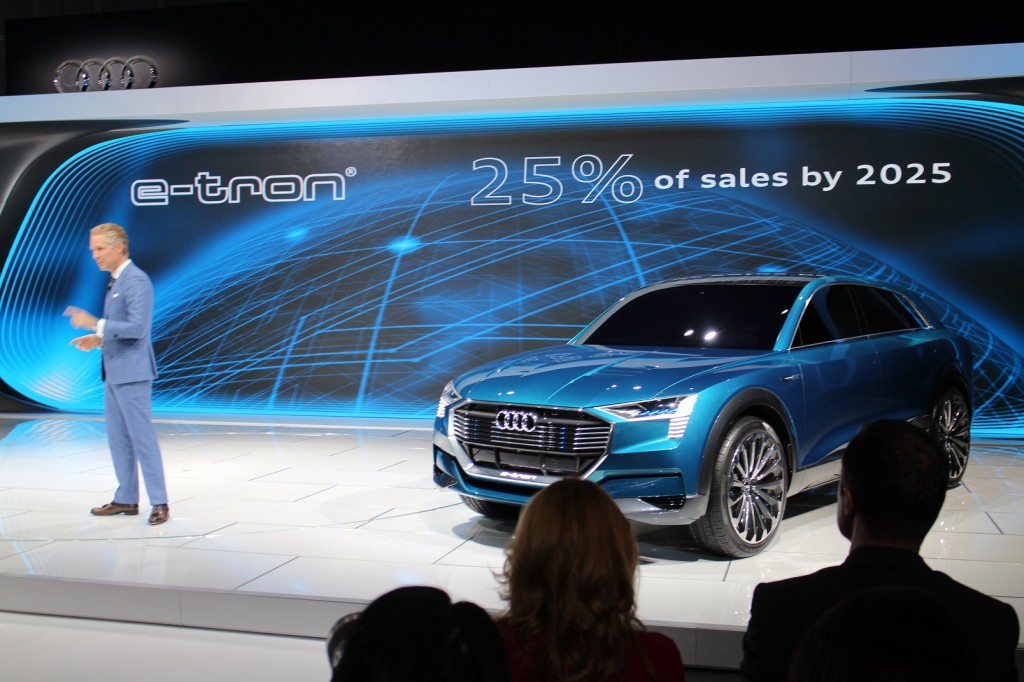
Audi of America president Scot Keogh with Audi e-tron quattro concept, 2015 Los Angeles auto show
To reduce development costs, Audi and Porsche are now working on a shared architecture for numerous future electric models.
Known as Premium Platform Electromobility, or PPE, it is expected to supplant both Porsche's J1 and Audi's MLB-Evo from 2022 or thereabouts.
It will be usable for "high-floor" cars such as utility vehicles, Weckbach said, which would be "tough" with the very low, sporty dimensions of J1 vehicles like the Mission E.
Development of the shared PPE larger-EV component set began one to one and a half years ago, said Weckbach, but it's not quite a clean-sheet design.
Large parts of it will be new, but it also took "the best modules from both" J1 and MLB-Evo.
"Development is just that fast" that changes to its accommodations for battery packs and high-voltage components were already required compared to J1 and MLB-Evo, Weckbach explained.

Volkswagen ID electric car concept, 2016 Paris auto show
The shared PPE architecture differs from the Volkswagen brand's MEB
Note that PPE is distinct from the MEB architecture for smaller electric cars that will underpin various Volkswagen models, starting with the ID hatchback that goes into production in November 2019.
(Other MEB models include the ID Crozz crossover, ID Buzz electric Microbus, and ID Vizzion large sedan, plus another crossover and a small sedan yet to be revealed.)
"Infrastructure has been lousy"
Those are Weckbach's direct words, referring to the state of DC fast-charging to date.
He's implicitly referring to the DC fast charging available for electric cars outside of Tesla, whose 135-kw Supercharger network now enables driving through much of continental Europe and the U.K.
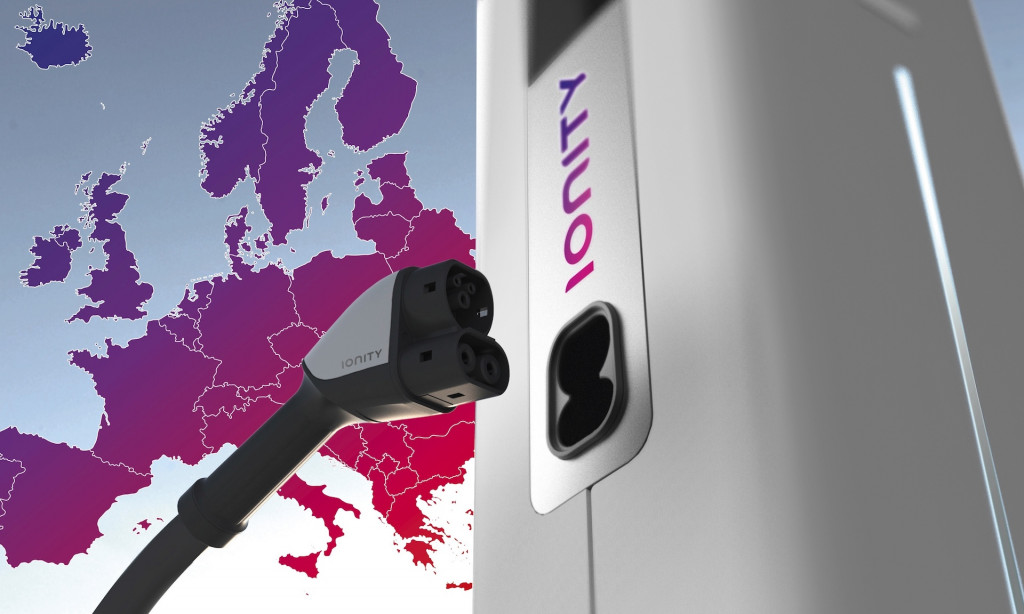
Ionity multi-brand European charging network
But Porsche has said for a couple of years that its customers won't tolerate 50-kw or 100-kw "fast" charging on longer trips, and if the company is to offer an electric car, battery recharges must take no longer than a gasoline stop on the highway.
That infrastructure will be "ready" by late 2019 or early 2020, he said, citing the Ionity fast-charging network now under construction in Europe and backed by more than half a dozen European brands and Ford.
But electric cars could come fast and soon
So far, "the industry has been ahead of the infrastructure," Weckbach said.

Porsche Mission E concept, 2015 Frankfurt Auto Show
Asked what a tipping point for electric cars would look like, he suggested that for Porsche buyers, the emergence of "nice executive" offerings from traditional luxury brands from 2019 through 2021 would raise awareness greatly.
Weckbach specifically cited planned battery-electric launches not just from Porsche but from other premium and luxury brands: its VW Group sibling Audi, along with BMW and Mercedes-Benz.
Carmakers must be ready, he said, for the day when China decides when it will ban the sale of new vehicles with combustion engines, as it said last September it would do.
Adoption of electric cars "could break quite fast," he concluded. Especially in California and other amenable regions, Porsche believes that electric cars could come on "faster than we think."

Porsche Mission E Cross Turismo concept
Porsche and Audi differ on some technologies
While VW Group is clearly pushing its premium brands to cooperate on costly electric-vehicle development, Porsche and Audi don't always see eye-to-eye.
Porsche uses permanent-magnet electric motors, Weckbach noted, while Audi doesn't.
The sports-car brand can afford the higher cost of that motor design, he suggested, which offers advantages in weight, size, power density, and heat dissipation against Audi's alternative.
Porsche is also, Weckbach noted, a VW Group center of excellence for battery pack design.
For all the coverage of the green-car concepts and production models on display in Switzerland, see our Geneva auto-show news page.
Porsche provided airfare, lodging, and meals to enable Internet Brands Automotive to bring you this first-person report.













